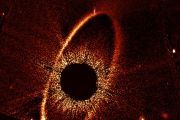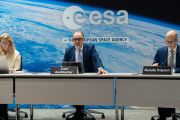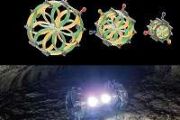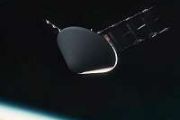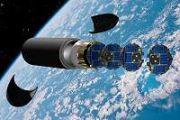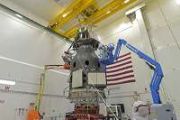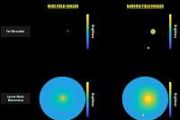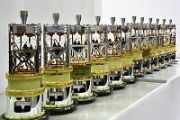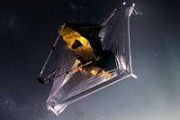
Copernical Team
SpaceX Inspiration4 lifts off on first all-civilian orbital mission
 The SpaceX mission Inspiration4 - the first all-private orbital spaceflight - lifted off from Florida on Wednesday night, carrying four civilians led by philanthropist and pilot Jared Isaacman.
The Falcon 9 rocket carried the Crew Dragon capsule into a mostly clear night sky as planned at 8:02 p.m. EDT from Launch Complex 39A at Kennedy Space Center.
"The Inspiration 4 have lif
The SpaceX mission Inspiration4 - the first all-private orbital spaceflight - lifted off from Florida on Wednesday night, carrying four civilians led by philanthropist and pilot Jared Isaacman.
The Falcon 9 rocket carried the Crew Dragon capsule into a mostly clear night sky as planned at 8:02 p.m. EDT from Launch Complex 39A at Kennedy Space Center.
"The Inspiration 4 have lif Quest airlock | Space Station 360 (in French with English subtitles available)
 Video:
00:01:34
Video:
00:01:34
ESA astronaut Thomas Pesquet takes you on a tour of the International Space Station like no other. Filmed with a 360 camera, the Space Station 360 series lets you explore for yourself alongside Thomas’s explanation – episode four is NASA’s Quest airlock.
The Quest airlock is the Station’s smallest module, but it is vital for going on spacewalks. This is where the astronauts suit up into their spacesuits, prepare for the spacewalk and enter the airlock to go outside for maintenance, installing new equipment or science experiments.
Follow Thomas: https://blogs.esa.int/exploration/it/category/astronauts/thomas-pesquet/
The video is in French, to activate the English
3 crew leave China's space station for Earth after 90 days
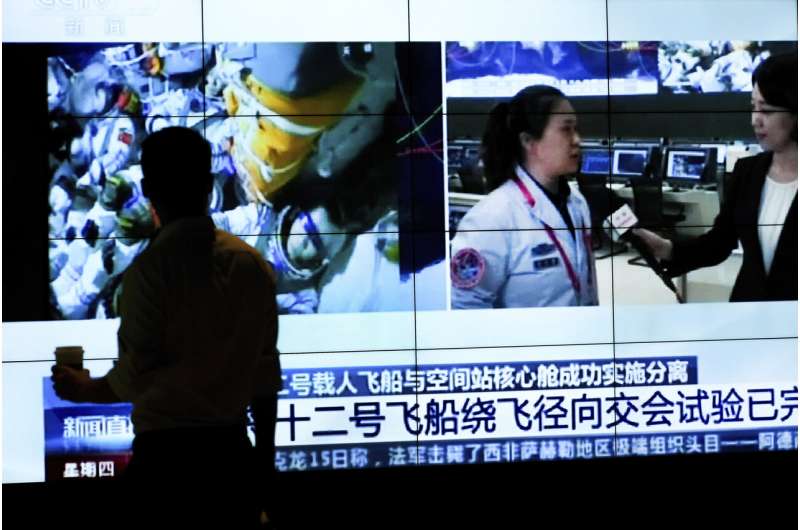
Three astronauts who lived for 90 days on China's space station departed Thursday in preparation for returning to Earth.
The national space agency said Nie Haisheng, Liu Boming and Tang Hongbo boarded the Shenzhou-12 spacecraft and undocked from the space station at 8:56 a.m. Thursday (0056 GMT).
State broadcaster CCTV aired footage of the astronauts securing packages inside their spacecraft, which is due to parachute to a location in the Gobi Desert near the Jiuquan launch center on Friday.
What’s going on with the ozone?

World governments agreed in the late 1980s to protect Earth’s ozone layer by phasing out ozone-depleting substances emitted by human activities, under the Montreal Protocol. The phase out of these substances has not only helped protect the ozone layer for future generations but has also protected human health and ecosystems by limiting the harmful ultraviolet radiation from reaching Earth. On 16 September, the International Day for the Preservation of the Ozone Layer, we take a closer look at this year’s ozone hole.
Solar cell system
 Image:
Solar cell system
Image:
Solar cell system SpaceX launches 4 amateurs on private Earth-circling trip

SpaceX's first private flight streaked into orbit Wednesday night with two contest winners, a health care worker and their rich sponsor, the most ambitious leap yet in space tourism.
Contest winners, health worker orbiting world in SpaceX 1st
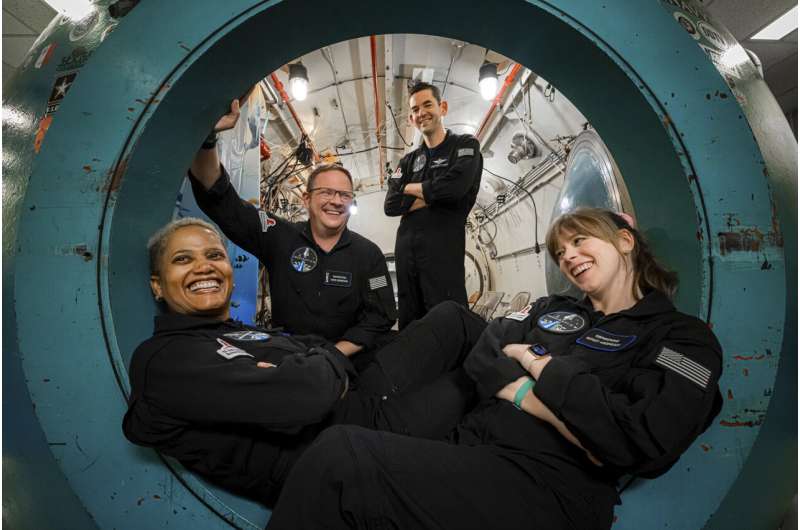
The four people on SpaceX's first private flight are fairly ordinary, down-to-Earth types brought together by chance.
They'll circle Earth for three days at an unusually high altitude—on their own without a professional escort—before splashing down off the Florida coast.
SpaceX sends all-civilian crew into orbit
 A SpaceX Falcon 9 rocket carrying four space tourists blasted off Wednesday night from the Kennedy Space Center in Florida for the first mission to orbit the globe with an all-civilian crew. A huge fireball illuminated the sky as the rocket's nine engines began to pull away from Earth at 8:02 pm (0002 GMT Thursday). Around 12 minutes later, the Dragon capsule separated from the rocket's send stage as the crew entered orbit, while the re-usable first stage made its way back to Earth for a vertical landing on a sea barge.
A SpaceX Falcon 9 rocket carrying four space tourists blasted off Wednesday night from the Kennedy Space Center in Florida for the first mission to orbit the globe with an all-civilian crew. A huge fireball illuminated the sky as the rocket's nine engines began to pull away from Earth at 8:02 pm (0002 GMT Thursday). Around 12 minutes later, the Dragon capsule separated from the rocket's send stage as the crew entered orbit, while the re-usable first stage made its way back to Earth for a vertical landing on a sea barge. SpaceX aiming for night launch of 4 on 1st private flight

SpaceX aimed to blast a billionaire into orbit Wednesday night with his two contest winners and a health care worker who survived childhood cancer.
It's the first chartered passenger flight for Elon Musk's SpaceX and a big step in space tourism by a private company.

 Image:
To the Moon!
Image:
To the Moon! 
